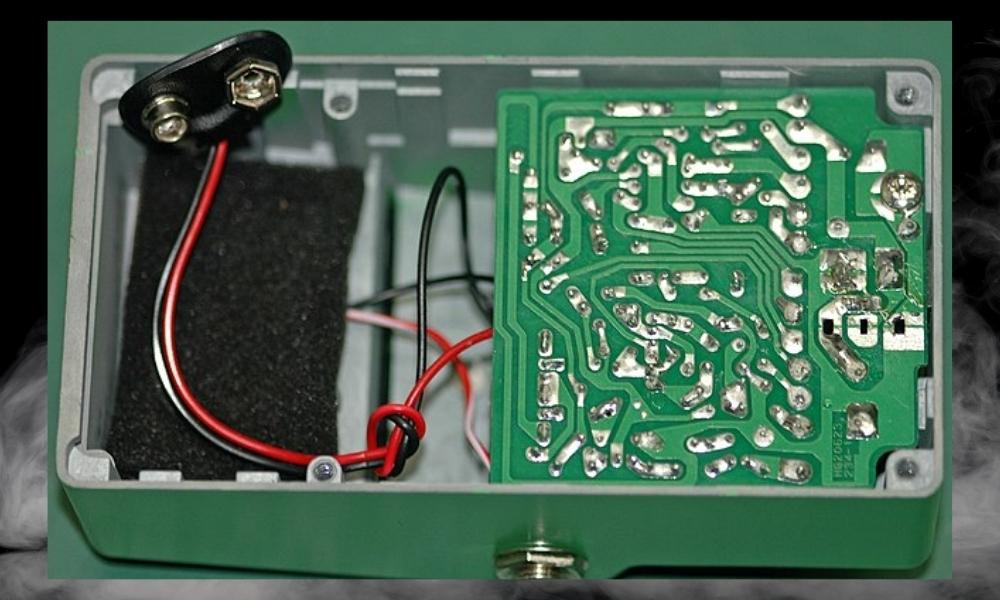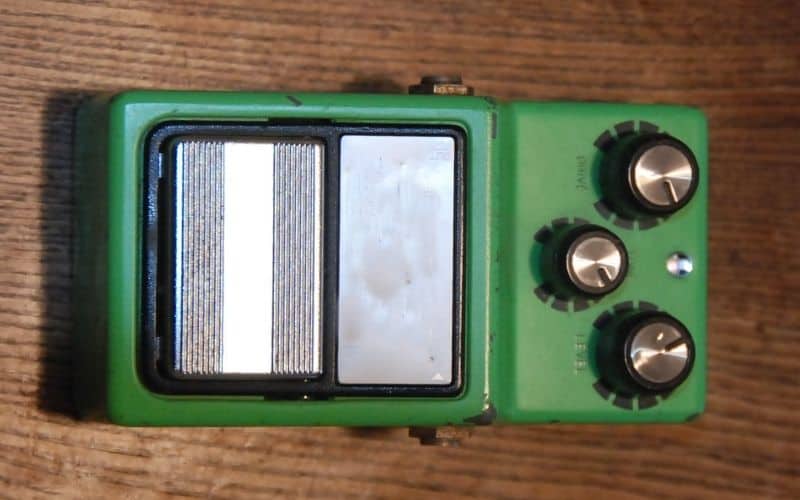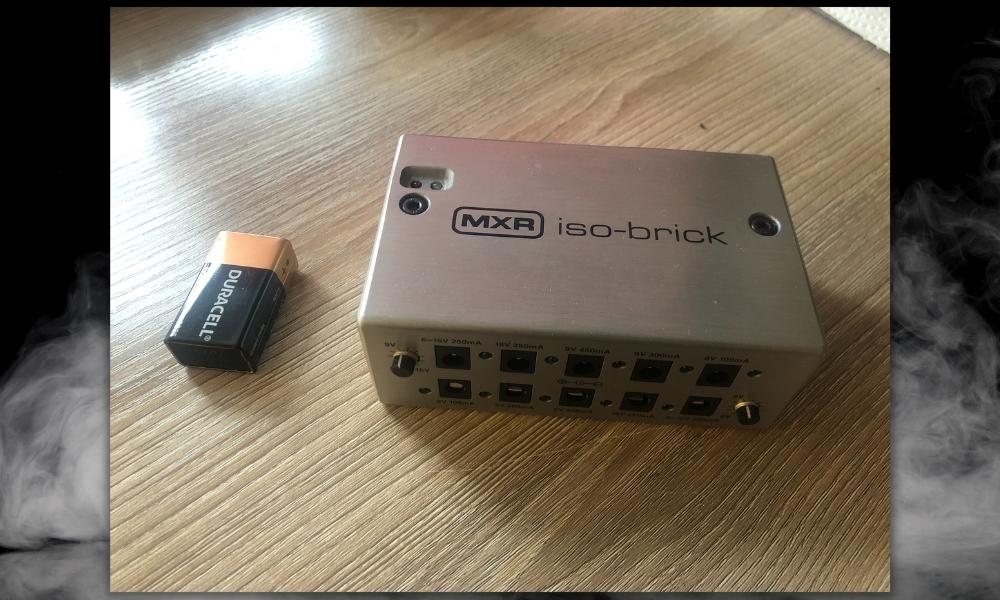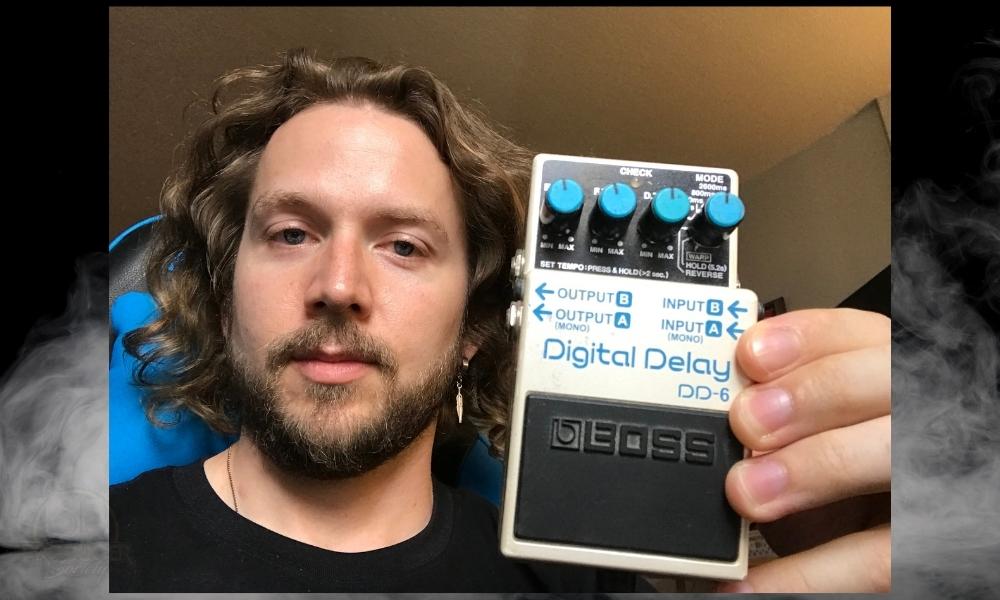If you’re unfamiliar with how electrical components work, figuring out the difference between pedals and how they’re powered can get confusing. I recently learned that some prefer to use batteries in the guitar pedals because of the direct current they provide.
As a result, manufacturers like Voodoo Labs and MXR have created power supplies that provide a “sagging” effect – which is another way of explaining how you can starve a pedal of voltage. But what pedals actually sound good with a dying battery?
Distortion, overdrive, wah, boost, and fuzz pedals tend to sound best with a dying battery due to how the decreased voltage affects the transistor technology in the analog circuit. In this circuit, the battery is isolated from the gain stages, and the battery affects the sound as a result.
I’m not an expert in how guitar pedals are made nor are I an electrical engineer, but I’m familiar with how dying batteries affect pedals because I’ve played guitar for decades. Let’s talk about this subject a bit more down in the section below, because there are a few interesting points I’ve yet to make…
Which Guitar Pedals Sound Best With A Dying Battery?
1) Fuzz Pedals Are The Most Noticeable
The video from Wampler Pedals above demonstrates how a fuzz pedal sounds with a dying battery. The Fuzz Face circuit that I’m going to show you later in the article is the kind of circuit that functions well with a dying battery.

However, as I previously stated, many pedals just don’t have a circuit that works like that therefore a dying battery won’t have the “sagging” sound you’re looking for (read the end of my other article for more information on dying batteries and guitar pedals).
2) Overdrive, Gain, and Boost Pedals

Another guitar pedal type that’s famous for working well with a sagging battery is the classic overdrive pedal. If it’s a digital overdrive pedal, it won’t work like that, but I know that many overdrive pedals do work well with a dying power source.
In the video I mentioned earlier from Wampler Pedals, he states that the BOSS Blues Driver is one of the better pedals that respond to a dying battery. So maybe it’s worth your time to check that out.
Additionally, Vertex Effects’ YouTube channel does an awesome demonstration of just how great a battery sounds in an overdrive and fuzz pedal versus a regular power supply.
3) Distortion Pedals
![MXR Distortion - What Guitar Pedals Sound Better With Dying Batteries [EASY]](https://travelingguitarist.com/wp-content/uploads/2022/06/MXR-Distortion-What-Guitar-Pedals-Sound-Better-With-Dying-Batteries-EASY.jpg)
I hesitated to include distortion on the list because of the conflation of overdrive and distortion which are sort of like the same thing, but not quite (my guide on this). There are some distortion pedals that use the kind of circuitry that a dying battery can be used for.
4) Wah Pedals
If you take a look at this video, Vertex Effects does a demonstration how the wah pedal works with a carbon battery compared to a power supply and it makes a significant difference in how it sounds, almost completely revamping and improving the sound.
This is one reason why people prefer to use carbon-zinc batteries in certain pedals when they’re recording or playing live. It’s because they tend to sound a lot better than a regular power supply.
A regular carbon 9V battery tends to make a wah pedal, and other effects, sound a lot richer, fuller, more dynamic, livelier, and just a lot better in many ways that are hard to describe.
I recommend checking out the video I’ve linked above. Many Gear Space forum users made the same argument for their pedals as well.
4 Things to Know About Battery-Powered Pedals

1) Certain Circuits Are More Apt for A “Dying Battery” Sound
![Fuzz Face Circuitry - What Guitar Pedals Sound Better With Dying Batteries [EASY]](https://travelingguitarist.com/wp-content/uploads/2022/06/Fuzz-Face-Circuitry-What-Guitar-Pedals-Sound-Better-With-Dying-Batteries-EASY-.jpg)
From what I understand about how guitar pedals are powered, certain transistor-based analog circuits are more complicated than others, many of which feature additional components.
The simplest circuits with fewer components, like fuzz pedals, will often have a battery component that isn’t isolated from the rest of the circuit. Because of this, the battery inside the pedal will play a role in how it ultimately sounds.
Older pedals that have an unregulated power device can operate under decreased voltage and this is primarily the case for fuzz, overdrive, distortion, and other boost pedals.
Many of these pedals act a bit like amplifiers, in the sense that the power supply controls the load on the output, as this article points out. Simply put, when you reduce the battery voltage, what you end up doing is you drop the signal level at the output.
But the same thing cannot be said for digital pedals which simply don’t work this way. Digital pedals are using a newer technology so that varying outputs don’t change the sound of it. It’ll just stop working once the voltage dips below 6V or so.
Additionally, there are some analog pedals that have power supply caps so they sound consistent regardless of what kind of power you’re using to work them. Carbon, alkaline, AC to DC power supply; it won’t matter because they’re designed for predictability.
On that note, let’s talk a bit about digital pedals and how the effect doesn’t work the same way for them.
2) The Effect Doesn’t Work For Digital Pedals

Digital pedals (my guide on the DD-6 here) are completely different from classic analog pedals because they function as computers, essentially, and they’re not wired up like the way traditional pedals are. That means the dying battery trick probably won’t work for them.
For example, if I try and use my MXR Isobrick’s lagging battery effect on my BOSS DD-6 – which is a Digital Delay pedal – it doesn’t really affect the sound at all. As a matter of fact, the pedal just ceases to work past a certain mark. This brings me to my next point.
3) There Is A Point Where The Pedal Will Merely Shutdown
If you play the video shown above, it’ll take you to the point where you can see how the dead battery is feeding the noise gate just enough power for the LED light to turn on, but not enough for the pedal to actually work.
Many pedals, especially digital pedals, won’t function at all if you dip below 7.0V or 8.0Vm. On the other hand, if you try and exceed 9V, you risk frying the pedal.
So really there is no leeway, so to speak. The pedal needs a certain amount to function properly, no more, no less. There’s no point in even using a 9V battery in a looper pedal, for example, because it’ll just die after an hour which I explained here.
4) Alkaline and Carbon Batteries Sound Different
As I mentioned earlier, the differences between how pedals sound don’t stop at how you’re supplying power to them. Another big factor in how they sound is the difference between carbon-zinc and alkaline batteries.
A lot of people say that carbon-based batteries, particularly carbon-zinc, sound a bit better than alkaline batteries and a lot better than regular power supplies. Apparently, a lot of this has to do with impedance, current, and voltage levels.
A 9V power AC to DC adapter like a Pedal Power 3, MXR Isobrick, or even just a single adapter, supply 9V of power directly to the pedal without any fluctuations in current or voltage.
These power supplies are internally regulated so it makes adjustments on their own to keep the power stable. It’s purely 9V coming into the pedal at a very stable strength and a stable speed.
There are no voltage and current drops or fluctuations so the pedal gets what it needs at all times. In this sense, an alkaline battery is similar to the AC to DC power supply – they both supply power that’s linear, if you think about it as if it’s on a graph.
![Voltage/Time (Carbon, Alkaline, Power Supply) Graph - What Guitar Pedals Sound Better With Dying Batteries [EASY]](https://travelingguitarist.com/wp-content/uploads/2022/06/VoltageTime-Carbon-Alkaline-Power-Supply-Graph-What-Guitar-Pedals-Sound-Better-With-Dying-Batteries-EASY.jpg)
There are no ups and downs. Although, there is a bit of fluctuation with the alkaline 9v battery. But when you compare both the AC-DC adapters and alkaline batteries to the carbon-based battery, the difference becomes more striking.
The moment you begin using a carbon-based battery, the pedal will start dying almost right away. This has to do with how carbon-zinc batteries work.
They’re best suited for devices that need a low current draw, but they sound great in pedals with a high impedance.
Important Things to Note About the “Sagging” Battery Effect
1) It’s Worth Trying On Any Analog Effects Pedal
I only have about 6-7 guitar pedals, and a few of them are utility pedals like a noise gate and a tuner, for example, so I can’t say exactly which pedals are the best with a dying battery. It’s up to you to experiment a bit with a dying battery.
I was thinking about buying a whole list of guitar pedals for my own experiment, and I may actually choose to do this someday soon. But for now, give it a shot for yourself and see what happens. Just whatever you do, don’t give too much voltage to a pedal.


 Written By :
Written By :
![Dunlop Crybaby Wah Wah Pedal - What Guitar Pedals Sound Better With Dying Batteries [EASY]](https://travelingguitarist.com/wp-content/uploads/2022/06/Dunlop-Crybaby-Wah-Wah-Pedal-What-Guitar-Pedals-Sound-Better-With-Dying-Batteries-EASY.jpg)
![Carbon-Zinc versus Alkaline - What Guitar Pedals Sound Better With Dying Batteries [EASY]](https://travelingguitarist.com/wp-content/uploads/2022/06/Carbon-Zinc-versus-Alkaline-What-Guitar-Pedals-Sound-Better-With-Dying-Batteries-EASY.jpg)
